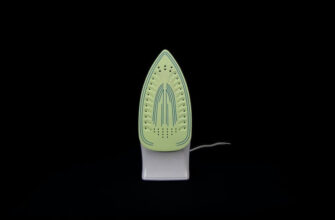Rechargeable batteries have gained a strong foothold in the battery market. Despite the fact that thousands of new models are added to the range of appliances with built-in power sources every year, they remain relevant. Rechargeable batteries are ubiquitous in toys as well as in a variety of gadgets from flashlights and scales to flashlights and cameras. Therefore, the question of how to charge rechargeable batteries is steadily relevant.
Rechargeable batteries have a number of undeniable advantages compared to their disposable counterparts. These include:
- Multiple recharging, which gives years of use;
- Lower cost of use in terms of operating hours;
- Possibility of installation in equipment with recharging function (flashlights with a dynamo, etc.).
- Such batteries pay for themselves in 3-4 months, after which there is a net savings. But this is only possible if you know how to properly charge rechargeable batteries. We have compiled basic information on this topic.
Types of batteries
Manufacturers now make five types of replaceable disposable batteries. They differ in the type of electrolytic fluid inside, as well as the material from which the electrodes are made.
- Salt batteries. Marked by the Latin letter R. They first appeared in the middle of the last century and replaced the batteries based on manganese and zinc, which were used then. They use ammonium chloride as the electrolyte, and the cathode and anode are made of zinc and calcium. The advantage of these batteries is that they are cheap. However, they have a minimum shelf life and lose up to 40% of their charge and do not work well in sub-zero temperatures. It is recommended to insert them into remote controls, wall clocks and kitchen scales.
- Alkaline. Marked with LR and the word Alkaline. They have an affordable price and long life, high capacity and tightness. Suitable for devices with moderate and high power consumption. They can be inserted into players, cameras, tonometers, children’s toys. If used instead of salt, you can greatly increase the operating time before battery replacement.
- Mercury batteries. These batteries use mercury oxide, which gives high capacitance and electrical energy density. They can operate at very low air temperatures. Because of the potential danger to health these batteries are not widely used in consumer applications.
- Lithium batteries. Marked with the letters CR. The cathode in these batteries is made of lithium, which gives high capacity with low weight. Current characteristics do not change depending on the load, storage life reaches 12 years. They are used to power various electronics. Minus – a relatively high cost. Read more how to choose CR123 battery charger.
- Silver. Marked by the abbreviation SR. Their anode and cathode are made of zinc and silver, respectively. These batteries have a very high lifespan, density and capacity. Because of their high cost, they are used only in watches and similar devices.
How to identify rechargeable batteries?
This is an important question, despite the simplicity of the wording. Only special AA and AAA batteries are to be charged. Attempting to insert an ordinary battery into the charger can end badly. Up to and including cell combustion and mains short circuit.
The battery can be distinguished by several characteristic features:
- The presence of the inscription rechargeable (in English – rechargeable). This means that the cell can be recharged after discharging.
- Specifying the capacity in mAh (1500 mAh, etc.) indicates that this is a rechargeable battery. It is worth noting that some disposable lithium batteries are also marked accordingly.
- The voltage of rechargeable cells is predominantly 1.2 V, whereas conventional batteries have 1.5 V.
- In case the marking has been erased or is missing completely, you can use a multimeter to find out the voltage and the type of power supply.
How do I charge rechargeable batteries?
The quality and duration of use is directly determined by the charger you use for this purpose. It can conventionally belong to one of two types:
- Standard. Usually come with the manufacturer or sold under the same brand as the batteries themselves. This should also include all the “no-names”.
- Professional. Multifunctional equipment. Sold only separately from the batteries. Brands that produce really high quality devices are few.
The problem with standard chargers is that they are only designed to work with batteries of the same manufacturer. Their functionality is reduced to a minimum. There is no check of the level of charge, no control over the process of charging and no possibility to adjust the operation of the device.
With standard chargers it is difficult to calculate how much you need to charge the batteries. Here you have to calculate the charger operating time, which will not destroy the battery, manually. And you can only charge them in pairs, which in different states is guaranteed to shorten the battery life.
Professional models are devoid of these disadvantages. They are equipped with microprocessors, so they work with batteries carefully and intelligently. Such chargers have a flexible system of settings, allowing them to set optimal parameters for each individual battery. All useful information is shown on the display. Such variability helps to get the most out of the batteries due to the careful attitude. And that is up to 1500 charge/discharge cycles.
Instead of a conclusion
Especially good is the fact that microprocessor chargers give an unambiguous answer on how to charge the batteries for the first time. Special preset modes are responsible for this. For example, many models have a “Training” option where the device brings the battery into working mode through full charge/discharge cycles.
Buying high-quality batteries and a “smart” charger guarantees their long and full operation.









